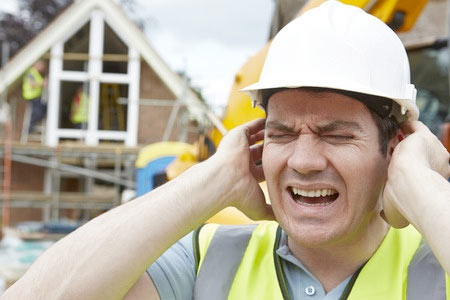Noise Safety
Noise reduction rating (NRR):
NRR is a standardized measure of noise reduction provided by a hearing protector as measured in the laboratory. It provides for a comparison when choosing a suitable protector for the intended use.
When hearing protection is worn, your level of exposure to noise is based on the NRR rating of the protection device being used.

Keep in mind, however, that while the NRR is measured in decibels, the hearing protector being used does not reduce the surrounding decibel level by the exact number of decibels associated with that protector’s NRR.
For example, if you are working in a machine shop with a level of noise exposure at 100 dB and you are wearing a hearing protector with an NRR 33 dB, your new level of noise exposure is 87 dB.
To determine the actual amount of decibel deduction applied (when decibels are measured dBA which is the most common), you take the NRR number (in dB), subtract seven, and then divide by two.
Given the previous example, your noise reduction equation would look like the following: (33- 7)/2 = 13.
“Dual protection” – use of earplugs and earmuffs required when levels exceed 105 dBA.
When hearing protectors are worn in combination (i.e. earplugs AND earmuffs), rather than adding the two NRR numbers together, you simply add five more decibels of protection to the device with the higher NRR.
Hearing protection is a sound investment!!
Download flyer:STOTW_348_NoiseSafety.pdf (366.08 kb)
Download Spanish flyer: STOTW_348_NoiseSafety_esp.pdf (366.68 kb)

